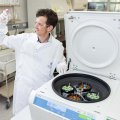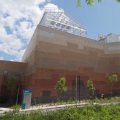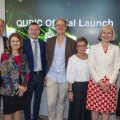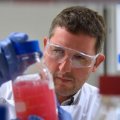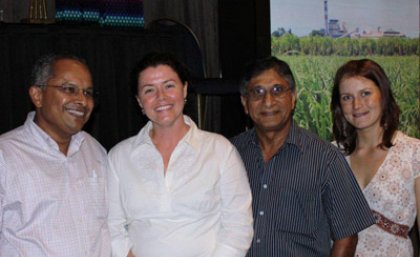
A research project that could avoid future overuse of nitrogen fertilisers on sugarcane has been honoured with a top industry award for innovation.
The SaveNcane project, jointly conducted by The University of Queensland and BSES, the principal provider of research, development and extension to the Australian sugarcane industry, won the Research Team Award at the Sugar Research and Development Corporation (SRDC) Innovation Awards announced in Townsville on April 17.
The research involves 13 researchers who have developed ways to improve nitrogen use efficiency in sugarcane cropping.
UQ researcher, Dr Nicole Robinson said the $10,000 prize would be used to promote outcomes from the research to sugarcane growers in Queensland and New South Wales.
“The joint UQ and BSES project aims to advance knowledge of the traits that make sugarcane more nitrogen use efficient through an integrated approach that combines crop physiology, breeding and agronomy,” said Dr Robinson.
“Currently much of the fertiliser that is applied to the soil is not absorbed by the sugarcane crop, creating environmental problems of nitrogen run-off, emission of greenhouse gases as well as economic penalty for the growers,” said Dr Robinson.
“The knowledge generated in this project will assist in the development of tools for breeding nitrogen-efficient sugarcane varieties and help reduce the need for nitrogen fertiliser.”
Despite decades of research and development, over-application of nitrogen remains a significant issue for the industry. The project addresses this with research that includes world-first field trials in North and Central Queensland.
“The results from the trials are very promising,” said Dr Robinson.
“Over two growing seasons, we have identified sugarcane types that consistently performed extremely well when supplied with much less nitrogen fertiliser than the recommended fertiliser rate,” Dr Robinson said.
“It suggests that there are sugarcane genotypes that are more nitrogen use efficient. This discovery forms a strong basis for selecting future sugarcane types that produce high yields but with lower nitrogen input.”
The University of Queensland and BSES has had a successful 10-year partnership.
Dr Robinson said the prize money would also help expand the project to undertake more detailed analysis of the reasons for the differences in nitrogen use efficiency, and to work with collaborators in Brazil.
Dr Prakash Lakshmanan, BSES Program Leader, Trait Development said the project would deliver practical findings that would help growers adhere to increasing environmental requirements.
“In addition, inter-institutional research projects such as this trade on each organisation’s key skills to deliver real value to industry,” Dr Lakshmanan said.
The University of Queensland PhD scholar Richard Brackin was also recognised at the event as the recipient of the 2013 Young Science and Innovation Award for his research in changing how sugarcane growers fertilise their crops.
Dr Peter Allsopp, Manager Cropping Systems and Technology Support, BSES Limited (BSES) was honoured with the Sugar Research and Development Corporation’s Industry Service Award. Dr Allsop has a Doctor of Agricultural Sciences from UQ.
SRDC Executive Director Annette Sudgen said SRDC was impressed by the high-quality nominations received this year, and that that Australian researchers are leading the way in sugarcane research innovation.
The awards were announced at the Australian Society of Sugar Cane Technologists (ASSCT) Conference.
Media Enquiries: SRDC Communications Manager Carolyn Martin (07 32109 0495/0439 399 886) or to request high resolution photos from event, email cmartin@srdc.gov.au; Dr Nicole Robinson (0405 697 111); Prof Susanne Schmidt (0408 707 984); Vanessa Sandhu, Communications Manager, BSES (0419 175 815).

